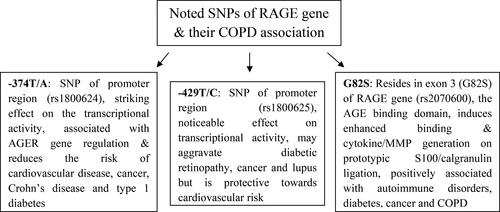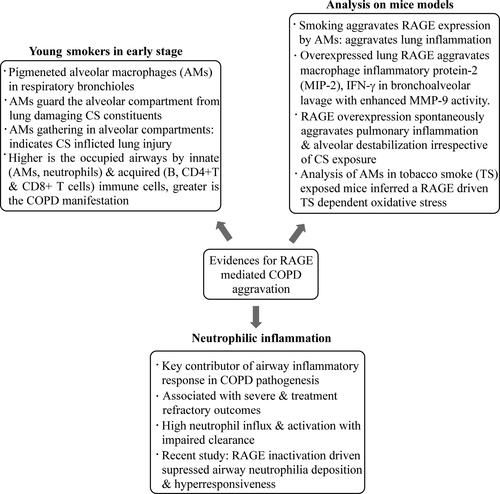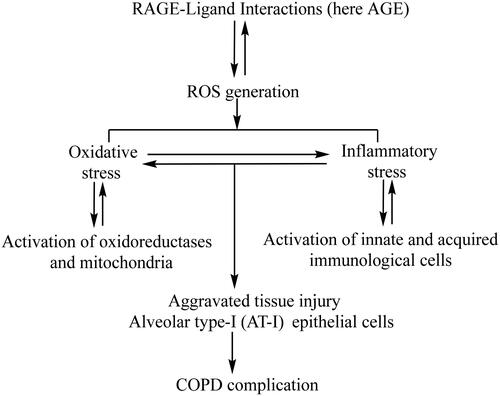Figures & data
Figure 2. Summary of -374 T/A, -429 T/C and G82S RAGE gene SNPs possible involvement in inflammation and COPD manifestation. The representations pinpoint the findings of 2014 study by Li Y and colleagues, wherein the depicted RAGE gene SNPs feature in top five of most noted ones.

Table 1. Noted polymorphisms of RAGE gene (AGER) with their implicit SNP prospects, molecular significance and characteristic involvement in COPD pathogenesis.
Figure 3. Implication of RAGE in COPD pathogenesis pinpointed distinctly in young smokers, adult mice and mitigated via neutrophilic inflammation.

Figure 4. Alveolar type I (AT-I) epithelial cells are predominant RAGE expressing in the lungs. The interaction of RAGE with AGE/other ligands generates reactive oxygen species from oxidoreductases and mitochondria which accumulates the troubling oxidative and inflammatory stress. Enhanced oxidative and inflammatory stress causes tissue injury (AT-I cells) and COPD complications.


